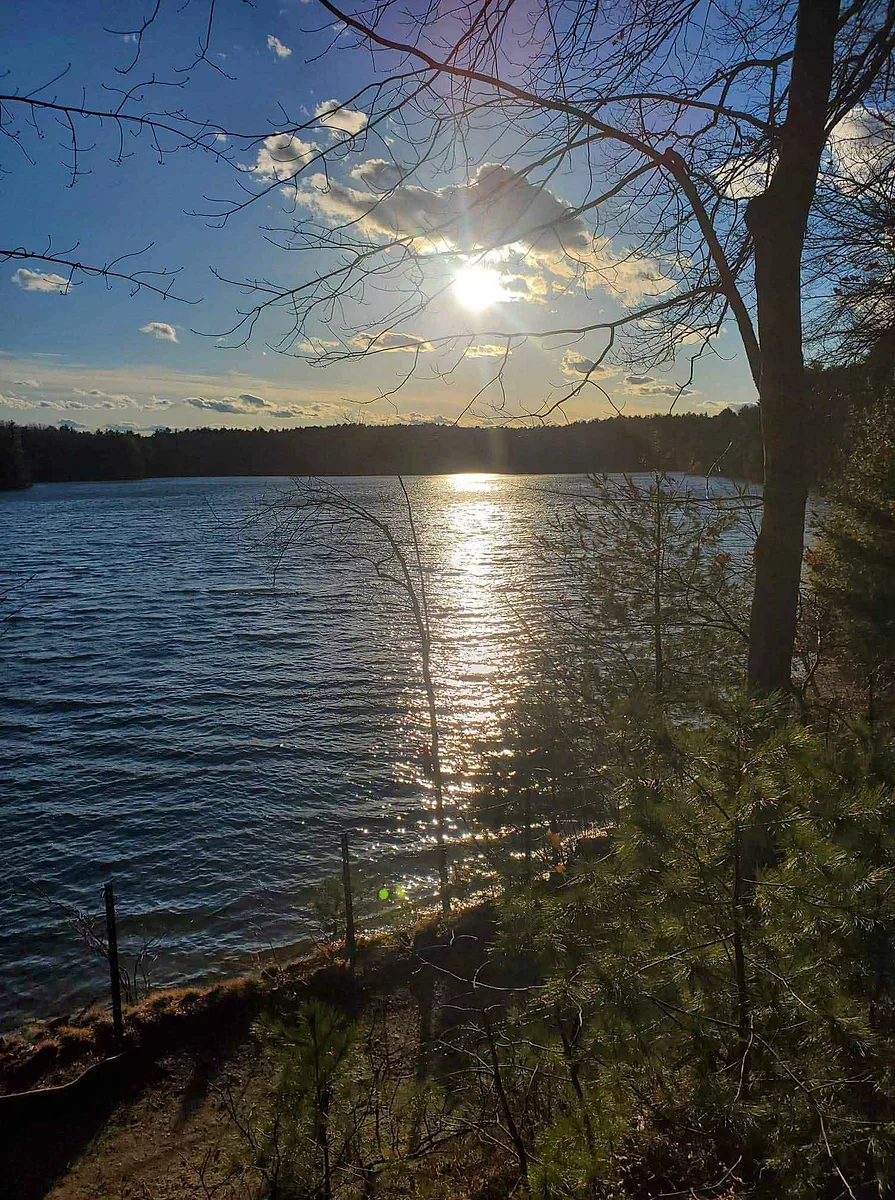“What evidence is there of spring? This light & warm sun--which compels us to throw our outside coats open wide--or take them off--even to seek the shade for coolness--This rapidly melting snow & these sparkling currents by the roadside--this softened ice--but above all the warble of a single blue-bird that came to us out of the softened air.” From Thoreau’s Journal; February 23, 1859.
Henry David Thoreau loved springtime. While it’s true that he had something to say about every season, he seemed to wax more poetic not only in the spring but about the spring. When the earth came alive after a long cold winter, Thoreau’s observations came to life as well.
“For the first time I perceive this spring that the year is a circle--I see distinctly the spring arc thus far…Why should I hear the chattering of blackbirds--why smell the skunk each year? I would fain explore the mysterious relation between myself & these things.” From Thoreau’s Journal; April 18, 1852.
By 1850 Thoreau had transformed his journal into something more than a daily account of his life and thoughts. While he continued to record the people, places, and things he encountered, along with passages that would be used in his lectures and essays, he also started keeping a record of the flora and fauna he observed on his walks. In December 1856 he would explain in his journal his methodology, observing when “plants first blossomed and leafed,” and noting that he would then “follow it up early and late, far and near, several years in succession… I often visited a particular plant four or five miles distance… that I might know exactly when it opened.”

Thoreau in 1861. Photo by E.S.Dunshee
Indeed, Thoreau’s careful observations of the seasonal changes in the fields, meadows, and woods of his beloved Concord were so meticulous, and so far-reaching, that it became well known about town that he could easily tell someone what day of the year it was just by observing what flowers were blooming or what trees were budding!
But Thoreau’s obsession with the change of the seasons went far beyond the leafing and flowering of trees and plants. He would keep track of, among other things, the height of the Concord River (always higher in the spring), the daily and nightly temperatures, bird migrations, seasonal rainfall, and many other weather-related phenomena. In a very real sense, Thoreau was one of the first naturalists to work in the field of phenology (a word that wasn’t coined until 1853), the study of cyclic and seasonal phenomena, particularly in relation to climate and its effect on plant and animal life. “I take infinite pains to know all of the phenomena of the spring,” he would write.
What was Thoreau planning to do with all of this information? By the late 1850s he was putting together a new work that he sometimes called his “Kalendar”. After 1852 he began to compile hundreds of lists and charts of the natural phenomena and create, to use a modern term, spreadsheets of his observations. It appears that Thoreau was hoping to compile a comprehensive, month by month history of the natural phenomena that took place in Concord every year.
Sadly, the Kalendar remained unfinished at Thoreau’s death in 1862. But the meticulous observations therein show that Thoreau had gone well beyond the idea that he was just a transcendental poet-philosopher. Indeed, by the end of his life, Thoreau was acting, thinking, and writing more and more like the naturalist that he had become. Some of his later essays like “Wild Apples” and “The Succession of Forest Trees” show a marked change in Thoreau’s thinking; the Transcendentalist had become a scientist. Still, Thoreau never completely gave up his poetic ways. Even when writing about something as mundane as a cranberry he could still be philosophical: “Let not your life be wholly without an object, though it be only to ascertain the flavor of a cranberry.”
Fast forward to the 1990s when Thoreau scholar Bradley Dean not only unearthed the Kalendar, long forgotten in the Henry W. and Albert A. Berg Collection at the New York Public Library, but organized and edited some of Thoreau’s unfinished manuscript and published it as “Wild Fruits” in early 2000. This led to new interest in Thoreau’s later scientific works, not only among literary historians, but among biologists and phenologists who would use Thoreau’s 19th century data for a comparison to the seasonal changes of the 21st century.
Dr. Richard Primack, a professor of plant ecology at Boston University, and his doctoral student, Abe Miller-Rushing, continued the work of Dean, who passed away in 2006. By sifting through Thoreau’s writings, Primack and Miller-Rushing were able to track the seasonal changes of Thoreau’s era and compare the data to the arrival of spring in the 21st century. Not surprisingly, in a series of scientific papers, they revealed that much of what Thoreau observed in the 1850s is not happening at the same time every year; for instance, Thoreau noted the flowering of blueberry bushes on May 11, 1853. In 2012, because of warming temperatures, the blueberry began blooming on April 1. With the publication of the book “Walden Warming” in 2015, Primack drew on Thoreau’s observations of plants and birds to show the very real effects of climate change and global warming.
Since 2007 Dr. Kristen Case, professor of English at the University of Maine in Farmington, has been involved with the reading and transcription of Thoreau’s Kalendar; not always an easy task, considering Thoreau’s notoriously bad handwriting! By the time the project is completed in 2024, the finished transcriptions will be partnered with essays to complement each month of the Kalendar, giving us a clearer picture of Thoreau’s “unfinished work,” as Emerson called it at Thoreau’s death.
But why do this? Why transcribe the jottings of a long-dead naturalist? Case explains, “These late, previously unpublished manuscripts demonstrate that in these years Thoreau was immersed in a large-scale work that fully engaged and often challenged the methods of contemporary science.” In other words, we get a better idea of the kind of work Thoreau was doing in the last years of his life and the Kalendar brings his later writings and studies into a sharper focus. It’s almost as if the inner workings of his mind are on full display. And the work of Dr. Case will make it easier for future historians and scientists to access Thoreau’s work and use it in their own studies. The Kalendar and its transcriptions are available online at thoreauskalendar.org.
When Thoreau died in 1862, he was eulogized by his friend Ralph Waldo Emerson. “The country knows not yet, or in the least part, how great a son it has lost,” Emerson said. It seems that now, 160 years later, the country has finally realized what was lost when Thoreau died. The discovery and use of Thoreau’s Kalendar brings his brilliant mind and writings solidly into the 21st century. As with all of Thoreau’s writings, the study of his Kalendar teaches us a lot about nature, about ourselves and, as Thoreau would put it, our relation to the universe.


